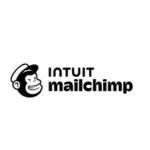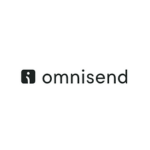Integrating your email marketing platform with your online store is one of the smartest moves you can make. When done correctly, it automates cart recovery, product recommendations, and post-purchase engagement — all without manual effort.
If you’re running a Shopify or WooCommerce store, this guide will walk you through the steps to connect your email tool and maximize your marketing results.
Why Integration Matters
Without integration, your email campaigns are limited. You might miss out on:
-
Abandoned cart recovery emails that boost sales.
-
Personalized product recommendations based on past purchases.
-
Post-purchase sequences that encourage repeat purchases.
By connecting your store with your email marketing platform, you create a seamless experience for your customers and save hours of manual work.
Step 1: Choose the Right Platform
Beginner-friendly platforms that integrate smoothly include:
-
Omnisend: Designed for ecommerce, strong automation, native Shopify/WooCommerce apps.
-
ActiveCampaign: Advanced automation and ecommerce tracking.
-
Mailchimp: Reliable free tier with Shopify integration.
-
Brevo (Sendinblue): Easy setup, transactional email support, and integrations.
Tip: Consider your store size and growth plans. If you plan to scale, pick a platform with robust automation and integration options.
Step 2: Connect Your Store
Shopify Integration Example
-
Log in to your Shopify admin dashboard.
-
Go to Apps → Visit App Store.
-
Search for your chosen platform (e.g., Omnisend or Brevo).
-
Install the app and follow the on-screen instructions.
-
Allow permissions to sync customers, orders, and products.
WooCommerce Integration Example
-
Install your email platform plugin (e.g., ActiveCampaign for WooCommerce).
-
Connect using API keys from your email tool.
-
Sync your product catalog and customer lists.
-
Test with a few sample transactions to confirm data flows correctly.
Actionable step: After connecting, create a test automation sequence — like a welcome email or abandoned cart reminder — to ensure everything is syncing properly.
Step 3: Set Up Key Automations
Once integrated, focus on automations that drive revenue:
-
Abandoned Cart Recovery: Send timely emails to shoppers who leave items in their cart.
-
Product Recommendations: Trigger emails based on past purchases or browsing history.
-
Post-Purchase Follow-Up: Thank customers, request reviews, or suggest complementary products.
Pro tip: Start with one automation at a time. For example, set up abandoned cart emails first — they often have the highest ROI.
Step 4: Track and Optimize
Integration isn’t set-it-and-forget-it. Monitor metrics like:
-
Open and click-through rates on automated emails.
-
Recovery rates for abandoned carts.
-
Repeat purchase rates and customer engagement.
Use these insights to refine your automations and make your campaigns more effective over time.
Final Thoughts
Integrating your email marketing platform with your online store is a changes everything. Platforms like Omnisend, ActiveCampaign, Mailchimp, and Brevo simplify the process, letting you focus on growing your business and nurturing customers.
If you want a deeper dive into platform comparisons and best practices, explore our full directory of email marketing tools for step-by-step guidance and actionable insights.




